Results 10,611 to 10,620 of 12096
Thread: Anandtech News
-
06-10-20, 09:48 PM #10611
Anandtech: ZADAK Announces First PCIe SSD: The Spark RGB M.2, NVMe Up to 2 TB
ZADAK, a company that up until now has primarily been known for its memory modules, has just announced its first-ever PCIe 3.0 SSD. The ZADAK Spark PCIe 3.0 x4 M.2 is exactly what the name says on the tin – a PCie 3.0 x4 M.2 SSD – and like so many other products these days, includes integrated RGB LED lighting, which is built into the inclusive aluminium heatsink.
In terms of performance metrics and specifications, the ZADAK Spark RGB PCIe 3.0 x4 M.2 is rated for sequential read speeds of up to 3,200 MB/s, while sequential write speeds go up to 3,000 MB/s. Meanwhile the drive will be available in three different capacities: 512 GB, 1 TB, and 2 TB.
One of the drive's more unique design feature focuses on the integrated RGB LEDs, which look to be equipped to the rear of the SSD. This design gives the Spark RGB PCIe 3.0 x4 M.2 SSD more of an under glow, as opposed to a direct light source from the top of the black and silver aluminum heatsink. And rather than reinventing the wheel by developing their own lighting control system, ZADAK has opted to focus on making the the integrated RGB lighting compatible with the major motherboard manufacturers' existing ecosystems. As a result, the RGB lighting can be used with ASRock, ASUS, MSI, and GIGABYTE's RGB customization software, allowing users to sync the drive's RGB lighting with compatible RGB-lit motherboards and memory modules.
Unfortunately, ZADAK hasn't released a list of detailed specifications for the drive; so we don't currently have any information on the controller type, the thickness of the heatsink, nor has it released the type of 3D NAND technology it is using. But we do know that the ZADAK Spark RGB PCIe 3.0 x4 M.2 SSD is set to be available in late July, with the 512 GB model starting at $119, while the the 2 TB version will go for $389.
Related Reading- Crucial Announces P5 and P2 NVMe SSDs: Going In-House for the High-End
- Patriot Launches External PCD M.2 PCIe Type-C SSDs: Up to 2 TB
- China Develops High Capacity QLC 3D NAND: YMTC at 1.33 Tb
- SK Hynix Sampling New PCIe 4.0 96L SSDs, 128L 4D NAND Enterprise SSDs
More...
-
06-11-20, 10:12 AM #10612
Anandtech: GeIL Unveils Orion Series Memory, Up to DDR4-4000 with 32 GB Memory Module
GeIL has announced its newest family of DDR4 modules, the Orion series. Available in two versions, one standard and one for AMD platforms, the Orion series offers SKUs ranging from single 8 GB sticks up to 64 GB kits with two matching 32 GB memory modules. Meanwhile the new modules will be available at memory speeds ranging from DDR4-2666 up to DDR4-4000.
Clad in in either Racing Red or Titanium Grey for something a bit more subtle, GeIL's Orion series of DDR4 memory is offered in kits specially designed for AMD's platforms. And for hardware purists (or closed case owners) out there, the Orion range omits the use of RGB LEDs for a more clean-cut look. Meanwhile it's interesting to note that, at least going by the photos provided by GeIL, the Orion modules look surprisingly tall for otherwise simple, RGB-free memory. Unfortuantely we don't have the physical dimentions of the DIMMs, but users with low clearance coolers and the like may want to double-check that there will be sufficient room.
Onto the technical specifications, GeIL plans to make the Orion flexible with both single and dual-channel kits available. These range from 8 GB to 32 GB modules, with the highest spec kit topping out at 64 GB of DDR4-4000, with latencies of CL18 and an operating voltage of 1.35 V.
At present, GeIL hasn't unveiled pricing for any kits in its Orion series, nor has it provided details of when they will hit retail channels.GeIL Orion DDR4 Memory Specifications Speed Latency Voltage Available Configurations DDR4-2666 19-19-19-43 1.20 V 8 GB (1 x 8 GB)
16 GB (1 x 16 GB)
16 GB (2 x 8 GB)
32 GB (1 x 32 GB)
32 GB (2 x 16 GB)
64 GB (2 x 32 GB)DDR4-3000 16-18-18-36 1.35 V DDR4-3200 16-18-18-36
22-22-22-521.20 - 1.35 V DDR4-3600 18-20-20-40
18-22-22-421.35 V DDR4-4000 18-24-24-44 1.35 V
Related Reading- SK Hynix: We're Planning for DDR5-8400 at 1.1 Volts
- TeamGroup Announces 32GB T-Force Vulcan Z and Dark Z DDR4 Modules
- G.Skill Launches 256 GB DDR4-3600 CL16 Memory Kit
- GIGABYTE Launches Designare DDR4-3200 Memory, a 64 GB Kit
- The Corsair DDR4-5000 Vengeance LPX Review: Super-Binned, Super Exclusive
More...
-
06-11-20, 02:25 PM #10613
Anandtech: ASUS ROG Maximus XII Hero Wi-Fi Review: The Tale of Two Motherboards
Some of the recent discussions around motherboard design are whether the motherboard manufacturers are actually adhering to the CPU vendor specifications. If a motherboard manufacturer improves the base power delivery and cooling, should they be allowed to go beyond Intel’s suggested turbo power limits, for example? The question is actually rather moot, given that the vendors have been doing this for over a decade in one form or another, so varying degrees of extreme. As this practice has come more into the public light, especially with Intel’s high-end processors going north of 250 watts, companies like ASUS have come under increased scrutiny. That is why, at least with the Maximus XII Hero we are testing today, ASUS offers two options on the first boot: Intel Recommended, and ASUS Optimized.
More...
-
06-11-20, 05:24 PM #10614
Anandtech: Sony Teases PlayStation 5 Design
Today during Sony’s “The Future of Gaming” show where the company and its partners revealed a slew of next-generation game titles, we also had a first glimpse of the physical design of the new PlayStation 5.
The new console is a significant departure for Sony’s console hardware which has retained a standard black design aesthetic ever since the PlayStation 2 (Although different colour scheme variants have been available). The new PlayStation 5 immediately stands out with its white-black design, as well for the fact that Sony is seemingly presenting the new console in a primarily vertical standing position.
The looks of the console are defined by an enveloping white rounded body that envelops a central glossy black middle section like some sort of cape. The black middle section at the top emits a blue light, illuminating the white side panels as well as the ventilation grills.
Today’s teaser showcased the first time what the console’s cooling hardware might look like. The new design looks to have ventilation grills throughout the whole top of the console as well as the top half of the front of the device, curving along the top corner of the design, with the grills present on both lateral sides. We don’t know if this is an exhaust or intake, or maybe even both, as we haven’t yet seen the back side of the new unit.
Sony’s presentation only showed the console in an upright position, so the design was possibly designed to be used like this in its most optimal fashion.
Another hint that the console might not be designed to be used in a horizontal position is the odd “hump” that appears where the BluRay disc drive is located. It’s a pretty unusual asymmetric design choice that inarguably will spark a lot of discussions.
Sony is also announcing a Digital Edition of the PlayStation 5 which doesn’t feature a disc drive, getting rid of the hump in the design. Digital distribution has gained a ton of popularity of the last few years and Sony now releasing a digital only console certainly points out that the company envisions this trend to continue and grow.
Both console variants feature a minimalistic front – we only find a single USB-A port and a single USB-C port, alongside a power button, and for the regular version the disc eject button.
Alongside the two new PS5 variants, Sony also announced several new accessories for the console: The new DualSense controller which we’ve known for some time now, a new DualSense charging station which charges up to two controllers at a time, a stereoscopic HD camera, a media remote, and a new headset dubbed the PULSE 3D Wireless Headset.
3D audio is meant to be a big part of the new PlayStation 5 experience thanks to the console’s new audio hardware capabilities – so Sony releasing a first-party headset tied in with the console release isn’t too big of a surprise.
The Sony PlayStation 5 is scheduled to be launched this holiday season at a yet undisclosed price. It is powered by a custom AMD SoC employing 8 Zen 2 cores up to 3.5GHz, a new customised RDNA 2-based GPU with 36 CUs and up to 2.23GHz frequency, and a new ultra-fast SSD and storage architecture that is said to be multiple times faster than the best PC storage devices on the market.
More...
-
06-11-20, 05:24 PM #10615
Anandtech: Jim Keller Resigns from Intel, Effective Immediately
Intel has just published a news release on its website stating that Jim Keller has resigned from the company, effective immediately, due to personal reasons. Jim Keller was hired by Intel two years ago to the role as Senior Vice President of Intel’s Silicon Engineering Group, after a string of successes at Tesla, AMD, Apple, AMD (again), and PA Semiconductor. As far as we understand, Jim’s goal inside Intel was to streamline a lot of the product development process on the silicon side, as well as providing strategic platforms though which future products can be developed and optimized to market. We also believe that Jim Keller has had a hand in looking at Intel’s manufacturing processes, as well as a number of future products.
Intel’s press release today states that Jim Keller is leaving the position on June 11th due to personal reasons. However, he will remain with the company as a consultant for six months in order to assist with the transition.
As a result of Jim’s departure, Intel has realigned some of its working groups internally with a series of promotions.
- Sundari Mitra, the former CEO and founder of Net Speed, will lead a newly created IP Engineering Group.
- Gene Scuteri will head the Xeon and Networking Engineering Group
- Daaman Hejmadi will lead the Client Engineering Group focused on SoC execution
- Navid Shahriari will continue to lead the Manufacturing and Product Engineering Group
Jim Keller’s history in the industry has been well documented – his work has had a significant effect in a number of areas that have propelled the industry forward. This includes work on Apple’s A4 and A5 processors, AMD’s K8 and Zen high-level designs, as well as Tesla’s custom silicon for self driving which analysts have Tesla’s competitors have said put the company up to seven years ahead.
With our interview with Jim Keller, several weeks after taking the job at Intel, we learned that Keller went in to the company with a spanner. Keller has repeatedly said that he’s a fixer, more than a visionary, and Intel would allow him to effect change at a larger scale than he had ever done previously.
From our interview:
JK: I like the whole pipeline, like, I've been talking to people about how do our bring up labs and power performance characterization work, such as how does our SoC and integration and verification work? I like examining the whole stack. We're doing an evaluation on how long it takes to get a new design into emulation, what the quality metrics are, so yeah I'm all over the place.Jim’s history has shown that he likes to spend a few years at a company and move on to different sorts of challenges. His two year stint at Intel has been one of his shorted tenures, and even recently Forbes published a deep expose on Jim, stating that ‘Intel is betting its chips on microprocessor mastermind Jim Keller’. So the fact that he is leaving relatively early based on his previous roles is somewhat different.
We just had an AI summit where all the leaders for AI were there, we have quite a few projects going on there, I mean Intel's a major player in AI already, like virtually every software stack runs on Xeon and we have quite a few projects going on. There's the advanced development stuff, there's nuts and bolts execution, there's process and methodology bring up. Yeah I have a fairly broad experience in the computer business. I'm a ‘no stone unturned’ technical kind of person – when we were in Haifa and I was bugging an engineer about the cleanliness of the fixture where the surface mount packages plug into the test boards.
Intel’s press release on the matter suggests that this has been known about for enough time to rearrange some of the working groups around to cover Jim’s role. Jim will be serving at Intel for at least another six months it seems, in the role of a consultant, so it might be that long before he lands another spot in the industry.
It should be noted that Jim Keller is still listed to give one of the keynote addresses at this year’s Hot Chips conference on behalf on Intel. We will update this story if that changes.
Related Reading- An AnandTech Exclusive: The Jim Keller Interview
- CPU Design Guru Jim Keller Joins Intel; Completes CPU Grand Tour
- Jim Keller Leaves AMD
- Apple A4/A5 Designer & K8 Lead Architect, Jim Keller, Returns to AMD
- Hot Chips 32 (2020) Schedule Announced: Tiger Lake, Xe, POWER10, Xbox Series X, TPUv3, Jim Keller Keynote
More...
-
06-12-20, 09:29 AM #10616
Anandtech: Storage Matters: Why Xbox and Playstation SSDs Usher In A New Era of Gamin
A new generation of gaming consoles is due to hit the market later this year, and the hype cycle for the Xbox Series X and Playstation 5 has been underway for more than a year. Solid technical details (as opposed to mere rumors) have been slower to arrive, and we still know much less about the consoles than we typically know about PC platforms and components during the post-announcement, pre-availability phase. We have some top-line performance numbers and general architectural information from Microsoft and Sony, but not quite a full spec sheet.
The new generation of consoles will bring big increases in CPU and GPU capabilities, but we get that with every new generation and it's no surprise when console chips get the same microarchitecture updates as the AMD CPUs and GPUs they're derived from. What's more special with this generation is the change to storage: the consoles are following in the footsteps of the PC market by switching from mechanical hard drives to solid state storage, but also going a step beyond the PC market to get the most benefit out of solid state storage. These are exciting times, to say the least.
To that end, today we're taking a look at what to expect from the new console SSDs, as well as what it means for the gaming industry as a whole.
More...
-
06-12-20, 09:29 AM #10617
Anandtech: Computex 2020 Cancelled; Coming Back In 2021
After a protracted battle with the SARS-CoV-2 virus, this year’s Computex trade show has finally succumbed to the pathogen.
One of the world’s largest IT trade shows – and frequently a venue for major PC-related announcements – Computex 2020 was scheduled to take place last week. However due to the coronavirus and all of the health and travel restrictions born from it, back in March the show was delayed and rescheduled for late September. But as it turns out, even a 3 month delay won’t be quite enough to make the show work, and as a result event organizer TAITRA has given up on plans to host the trade show this year.
Calling the latest change in plans a “rescheduling” of Computex, the show has been officially moved to June 1st through the 5th of 2021. Which means that although the show overall has not been canceled and that there will be another Computex next year, for all practical purposes the 2020 show has been cancelled.
In the brief announcement, TAITRA cited the ongoing travel restrictions as being the primary reason for cancelling the 2020 show. Taiwan is still largely banning foreign nationals from entering the country, which if still in place in September, would pose an obvious issue to attending the trade show. At the same time, the original plan to reschedule the show to September was always a bit of a dicey proposition, as the delay put the show out of sync with annual product release cycles and fewer companies were planning to attend, leading to TAITRA scaling down the show accordingly.
Notably, this makes 2020 the first year that Computex has been cancelled entirely. Even in the SARS outbreak of 2003, the show was successfully moved to September. Which goes to show how much more serious and disruptive SARS-CoV-2 has turned out to be.
More...
-
06-15-20, 10:45 AM #10618
Anandtech: AMD Announces Radeon Pro 5600M Navi GPU with HBM2 - Inside Apple's MacBook
Today AMD has officially announced one of the long rumoured missing Navi parts in the form of the new Radeon Pro 5600M mobile GPU, seeing the Navi 12 design finally take shape as a product.
The new high-end mobile GPU is a successor to the Radeon Pro Vega 20 and Vega 16 designs released back in 2018, products that ended up being used in Apple’s MacBook laptops. The new Radeon Pro 5600M also sees its debut in the new 16” MacBook Pro that’s also been debuted today. Apple has traditionally had exclusive rights to these mobile Radeon Pro SKUs so it’s likely this exclusivity also applies to the new Radeon Pro 5600M.
The new mobile GPU is characterised by its large compute unit count as well as its usage of HBM2 memory. With a CU count of 40, resulting in 2540 stream processors, the Radeon Pro 5600M actually matches AMD’s current best desktop graphics designs such as the Navi 10-based Radeon 5700XT. A key difference here lies in the clocks as this mobile variant only clocks up to a maximum of 1035MHz, resulting in a theoretical maximum throughput of 5.3TFLOPs, quite a bit less than its desktop counterpart which lands in at 9.75TFLOPs.AMD Radeon Series Mobile Specification Comparison AMD Radeon Pro 5600M AMD Radeon RX 5300M AMD Radeon RX 5500M AMD Radeon Vega Pro 20 AMD Radeon RX 560X CUs 40 22 22 20 14/16 Texture Units 160 88 88 80 64 ROPs ? 32 32 32 16 Game Clock N/A 1181MHz 1448MHz N/A N/A Boost Clock 1035MHz 1445MHz 1645MHz 1300MHz 1275MHz Throughput (FP32) 5.3 TFLOPs 4.1 TFLOPs 4.6 TFLOPs 3.3 TFLOPs 2.6 TFLOPs Memory Clock 1.54 Gbps HBM2 14 Gbps GDDR6 14 Gbps GDDR6 1.5 Gbps HBM2 7 Gbps GDDR5 Memory Bus Width 2048-bit 96-bit 128-bit 1024-bit 128-bit Max VRAM 8GB 3GB 4GB 4GB 4GB Typical Board Power 50W ? 85W ? ? Architecture RDNA (1) RDNA (1) RDNA (1) Vega
(GCN 5)GCN 4 GPU Navi 12 Navi 14 Navi 14 Vega 12 Polaris 11 Launch Date Q2 2020 Q4 2019 Q4 2019 10/2018 04/2018
In terms of bandwidth however, the mobile chip more than keeps up with its desktop counterpart. AMD is using a 2048-bit HBM2 memory interface to up to 8GB of memory running at 1.54Gbps, resulting in a bandwidth of 394GB/s, only a bit less than the 448GB/s of the Radeon 5700XT.
The Radeon Pro 5600M is advertised with a total graphics power (TGP) of 50W, identical to the TGP of the Radeon Pro 5500M and the Radeon Pro 5300M, both based on the Navi 14 die which contains much less compute units. This makes the 5600M an incredibly performant and efficient design.
The new Radeon Pro 5600 is now available inside of Apple’s MacBook Pro 16” as an option, and comes at a $700 mark-up versus the default Radeon Pro 5500M GPU.
Related Reading:- Apple Rolls Out 16-Inch MacBook Pro: A Bit Bigger, A Bit More Refined
- AMD Adds Radeon RX 5300M To Mobile GPU Lineup
- AMD Announces Radeon RX 5500 Series: 1080p Gaming for Desktop & Mobile, Coming This Quarter
- AMD’s Vega Mobile Lives: Vega Pro 20 & 16 in Updated MacBook Pros In November
More...
-
06-16-20, 02:41 PM #10619
Anandtech: The AMD B550 Motherboard Overview: ASUS, GIGABYTE, MSI, ASRock, and Others
AMD’s budget motherboard range is often at times more successful than the bigger, full fat versions. Users have in the past got almost all of the same chipset features on these motherboards than they did on the X-series range. That changes with the new B500 series as consumers no longer have PCIe 4.0 on the chipset, instead reverting back to PCIe 3.0. This ultimately should not be an issue, as budget builds are unlikely to have multiple PCIe 4.0 add-in drives, for example. Nonetheless, the high vocal demand for B550 motherboards, especially after AMD launched Ryzen 3, has not gone unnoticed, and there are over 40 new models in the market, most of which should be on sale from today.
More...
-
06-16-20, 02:41 PM #10620
Anandtech: Kioxia Launches PM6: First 24G SAS SSD, up to 30.72 TB
Kioxia (formerly Toshiba Memory) has launched their sixth generation enterprise SAS SSD, the PM6 series. This is the first SSD available to support the latest 24G SAS interface, doubling performance over the existing 12Gb/s SAS standard. Using 96-layer 3D TLC NAND flash memory, the PM6 offers capacities up to 30.72 TB and performance up to 4300 MB/s.
Serial-Attached SCSI (SAS) originated from the simple idea of running the enterprise-grade SCSI protocol over the Serial ATA physical layer, obsoleting parallel SCSI connections in the same way that SATA displaced parallel ATA/IDE in the consumer storage world. The first version of SAS corresponded to the second generation of SATA, with each running at 3 Gbit/s. SATA became a dead-end technology after one more speed increase to 6 Gbit/s, but SAS development has continued to higher speeds: 12Gbit SAS-3 was standardized in 2013 and "24G" SAS-4 was standardized in 2017. The "24G" is in quotes because SAS-4 actually runs at a raw rate of 22.5Gbit/s but delivers a true doubling of usable data rate by switching to lower-overhead error correction: 8b/10b encoding replaced with 128b/150b (actually 128/130 plus 20 bits of extra forward error correction), similar to how PCIe 3.0 switched from 8b/10b to 128b/130b to deliver 96% higher transfer rates with only a 60% increase in raw bit rate. Also similar to PCIe, it takes quite a while to go from release of the interface standard to availability of real products, which is why a 24G SAS SSD is only just now arriving.
Kioxia's enterprise SAS SSDs and their enterprise NVMe SSDs share the same bilingual controller ASIC and consequently the PM6 has a very similar feature set to the previously-announced CM6 PCIe 4.0 SSDs. This includes dual-port interface support for higher performance or for fault tolerance, and enough ECC and parity protection for the drive to survive the failure of two entire flash dies. The SAS-based PM6 series is limited to lower maximum throughput than the CM6, but a dual-lane 24G SAS link is still slightly faster than PCIe 3.0 x4. The higher performance enabled by 24G SAS means the PM6 can require more power than its predecessors—now up to 18W, though the drive can be configured to throttle to lower power levels ranging from 9W to 14W.
The PM6 SAS family is available in three endurance tiers: the 1 DWPD and 3 DWPD models closely correspond to CM6 NVMe models, but only the SAS product line gets a 10 DWPD tier. Maximum capacities are 30.72 TB in the 1 DWPD series, 12.8 TB in the 3 DWPD series and 3.2 TB in the 10 DWPD series. Kioxia said that 4 TB class drives are still the most popular, but this will probably be shifting toward the 8 TB models over the next year or so. The 30.72 TB models will remain more of a niche product in the near future, but they expect demand for those capacities to start picking up in 2021 or 2022. Detailed performance specifications for each model are not yet available.Kioxia Enterprise SSD Specifications Model PM6 SAS CM6 NVMe Form Factor 2.5" 15mm U.3 Interface, Protocol Dual-port 24G SAS PCIe 4.0 x4, NVMe 1.4 NAND Flash Kioxia 96L 3D TLC Capacities (TB) 960GB,
1.92TB,
3.84TB,
7.68TB,
15.36TB,
30.72TB800GB,
1.6TB,
3.2TB,
6.4TB,
12.8TB400GB,
800GB,
1.6TB,
3.2TB960GB,
1.92TB,
3.84TB,
7.68TB,
15.36TB,
30.72TB800GB,
1.6TB,
3.2TB,
6.4TB,
12.8TBWrite Endurance 1 DWPD 3 DWPD 10 DWPD 1 DWPD 3 DWPD Sequential Read 4.3 GB/s 6.9 GB/s
SAS in general is still a growing market both in terms of number of units and bits shipped and is projected to continue growing for at least a few more years, even though NVMe is gradually taking over the enterprise SSD market. Kioxia's customer base for SAS SSDs has been divided between storage array vendors and the traditional enterprise server market. The storage array market has been quicker about migrating to NVMe so this may be the last generation of SAS SSDs to see significant adoption in that market segment. SAS will be hanging around in the enterprise server market for a lot longer, helped in part by the backwards-compatibility with SATA hard drives for cheap high-capacity storage, and the straightforward traditional RAID solutions as compared to the challenges with NVMe RAID. The server market typically doesn't make as much use of the dual-port capability of SAS drives, so the speed boost from 24G SAS will be particularly welcome there, allowing drives to now reach about 2.3GB/s each rather than about 1.1GB/s on 12Gb SAS.
The Kioxia PM6 SAS SSDs are now available for customer qualification and evaluation. The drives have already been validated with 24G SAS host controllers from both Broadcom and Microchip (Microsemi/Adaptec).
More...
Thread Information
Users Browsing this Thread
There are currently 9 users browsing this thread. (0 members and 9 guests)




_575px.jpg)
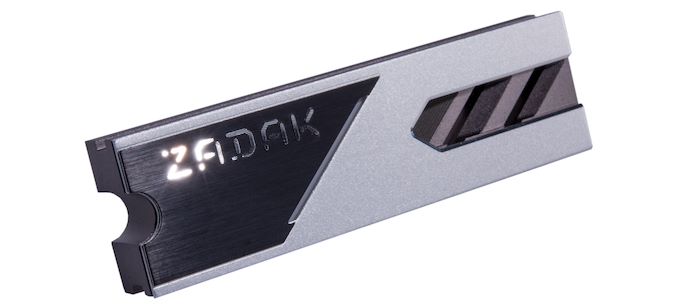

 Quote
Quote_575px.jpg)

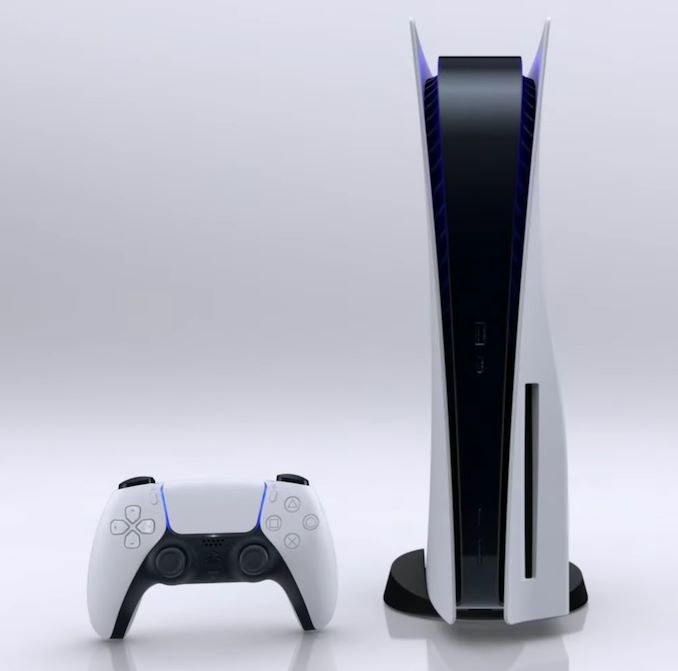
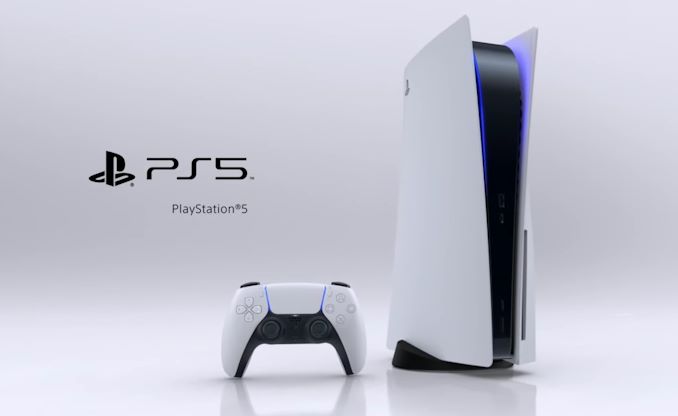
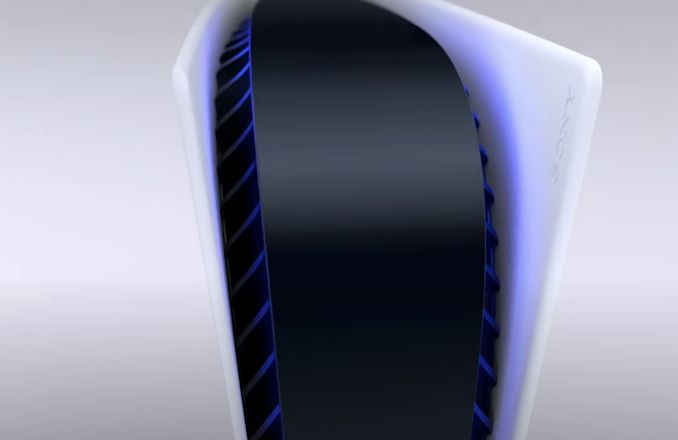
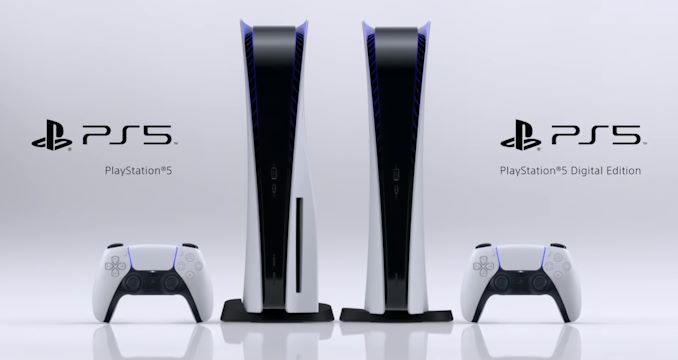



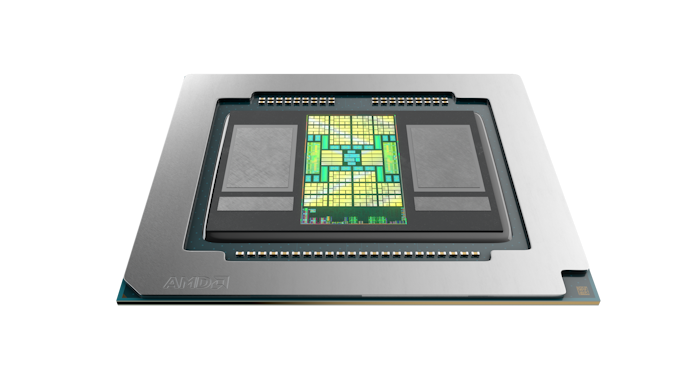

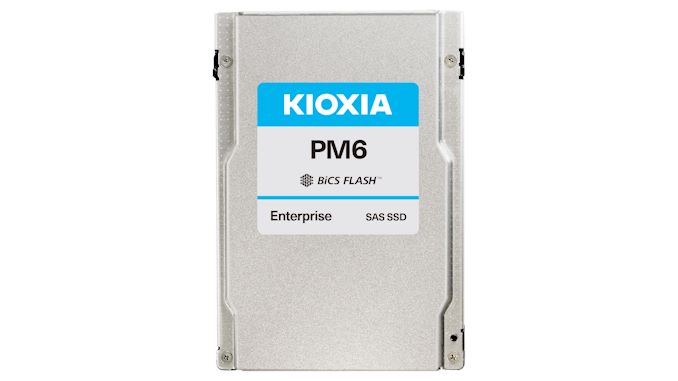
















Bookmarks